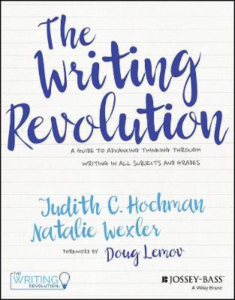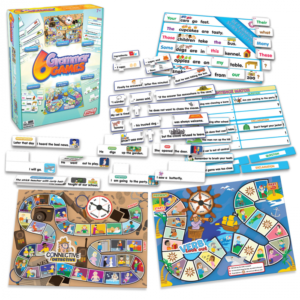WHAT IS GRAMMAR?
Grammar is the study of how words work and their relationships in sentences. We use sounds to make words and words to create sentences. Just like we need to know how sounds work in order to read and write words, we need to know how words fit together to create sentences. Grammar is the study of how words work and their relationships in sentences. It includes word study, parts of speech, sentence structure (also known as syntax), morphology, semantics (meaning) and punctuation. It is the system on which language is built and consists of a set of rules specific to each language.
Why do we need to understand grammar?
There are many reasons.
- Our brain learns best when we can clearly form, refine and structure information into categories. Grammar study gives clear, explicit foundations on which to build knowledge and promote understanding.
- Supports reading comprehension.
- Contributes to skillful writing and expression.
- Sets the tone of written expression – knowing how to choose words and structure sentences for specific purposes.
- Communicates the register of written expression – understanding how to vary word choice and sentence structure in order to achieve different degrees of formality.
- Supports flexibility of expression.
- Allows for precise and concise expression.
- Establishes a means/vocabulary of talking about writing.
- Gives clear focus for setting and evaluating learning goals (eg. We are learning to use action verbs).
- Cultivates linguistic analysis (thinking about language in critical and creative ways).
When should my child start to study grammar?
Children can start talking about words and their function as soon as they are able to orally form complex sentences. This is well before they start school and can be as early as 3 or 4. Young children’s brains are wired for language. There is no other time in their lives when they can absorb language more easily. Their capacity for vocabulary acquisition is virtually limitless.
Example: We saw a firetruck when we went to the park today.
We can analyse the word firetruck and point out this word is made up of two words fire+truck. Together they form a compound word.
Each noun is an opportunity to use adjectives – the more outrageous the better! This helps with building vocabulary and improves oral expression: loud firetruck, speedy, firetruck, red firetruck.
Each verb is an opportunity to think about a more refined and precise way of describing the action. Instead of went, use skipped, raced, dawdled, walked, strolled. Verbs also like adverbs – the manner in which the action is performed: slowly, quickly, happily, enthusiastically, sadly, forcefully, excitedly.
When should my child start learning grammar at school?
Grammar should be taught as part of reading and writing instruction from the start. It provides the scaffolding on which to build writing skills, some aspects of spelling and reading comprehension.
What should grammar instruction look like in later years?
From Year 4 onwards, grammar could focus on refining understanding of complex parts of speech with a focus on complex sentences, and advanced clause analysis. Students should have the opportunity to study different authors and how they use grammar for effect and style. Genre specific writing instruction should be based on grammar.
What should my child know in the first 4 years of school?
If grammar foundations are set in the early years, instruction in both reading and writing in later years is more effective, deeper and broader in scope. By the end of Year 4, children should:
- have a good understanding of all the parts of speech and their function relative to each other
- be able to build and take apart simple sentences
- be able to construct compound sentences with FANBOYS conjunctions (for, and, nor, but, or, yet, so)
- be familiar with and use most aspects of punctuation correctly
- distinguish between the 4 categories of sentences: statements, questions, exclamations and commands
- distinguish between phrases, fragments and complete sentences
- have some understanding of building complex sentences using dependent and independent clauses
- be able to identify subjects and predicates in a sentence with confidence
- be able to diagram/symbolise a sentence, analysing the different ways in which parts of speech functions and is related to other parts of speech in a sentence
- know and use prefix and suffix knowledge to spell (eg. -ed, -es, -ing, un-, re-, pre-).
For example, narratives have a very specific sequence of verb use. In some parts of the story, the author uses vivid action verbs in quick succession to create a sense of suspense and breathlessness followed by a period of static verbs (related to thinking, feeling, planning, reacting) to slow the action down and allow the characters time to react, plan or reflect on what has happened. When writing to inform, for example, we use mainly be, do, have and semantic (meaning) equivalents to explain how something works.
This is also a great age to start looking at etymology – the story (history) of words. Etymology is a great way of understanding and appreciating history and the evolution of the words we use today. In addition, etymology also provides a lot of spelling clues.
Check out Etymology online dictionary
How do I support my child to learn more grammar?
The first step is learning about it yourself so that you can understand how to guide and support your child. When reading with your child, stop and look closely at how the words are put together. Go on a parts of speech hunt through the book. Find actions words and act them out (this is fun!). When driving to and from activities, use cars’ number plates as a starting point to come up with nouns, verbs, adjectives.
For example, take the number plate JTK123. We can make:
- nouns (jam, jacket, jet, jest, joke; top, table, test, toast, tent; kite, kettle, kit, kid, kindling)
- verbs (jump, jumble; talk, tumble; keep, know)
- adjectives (jolly, jumpy; tall, twisted; kind, knotted).
Now, you can create phrases and sentences: the jolly jam jumps; the twisted top tumbles; the kind kid knows.
HELPFUL RESOURCES









Thank You
The deb would like thank Elena Ciobanu, who is a member of the deb community and a fully qualified SPELD educator for developing this information.
This document was created by Elena Ciobanu in January 2022